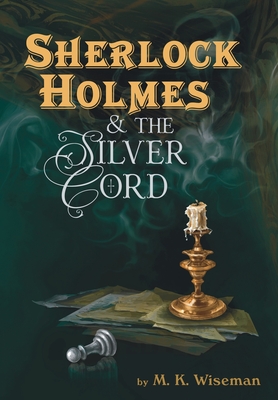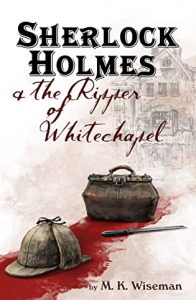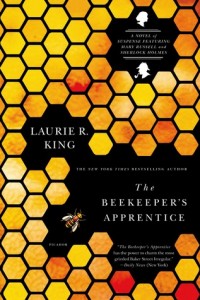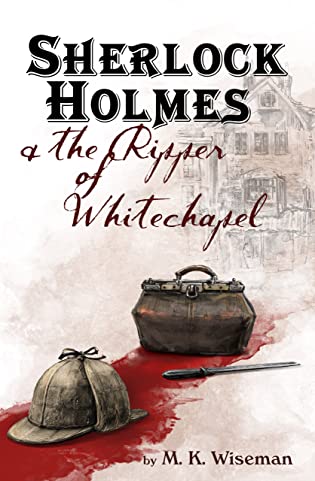 Sherlock Holmes & the Silver Cord by M.K. Wiseman
Sherlock Holmes & the Silver Cord by M.K. Wiseman Format: eARC
Source: supplied by publisher via Edelweiss
Formats available: hardcover, paperback, ebook
Genres: historical mystery
Pages: 198
Published by M.K. Wiseman on August 1, 2023
Purchasing Info: Author's Website, Amazon, Barnes & Noble, Kobo, Bookshop.org, Better World Books
Goodreads
"I speak of magic, Mr. Holmes." Poor Mr. Percy Simmons, leader of London's Theosophical Order of Odic Forces, stands upon the hearth rug of 221B Baker Street, slowly mangling his hat brim in ill-concealed distress and fully aware that his is not a case which Mr. Sherlock Holmes would ordinarily take up. These are not ordinary times, however. For something, some unquiet demon within Holmes stirs into discomfiting wakefulness under the occultist'swords. This unassuming Mr. Simmons has-in addition to his more fantastical of claims-spoken of good and evil with the sort of pure conviction and sincerity of soul that Sherlock yearns for. Something Holmes sought for himself during the three years in which the world thought him dead. While, for all intents, constructions, and purposes, he was dead. But, six months ago, Sherlock Holmes gave up that chase. He returned to Baker Street, declared himself alive to friend and foe alike, took up his old rooms, his profession, and his partnership with Dr. J. Watson. Only to find himself haunted still by the questions which had followed him out of the dreadful chasm of Reichenbach Why? Why had he survived when his enemy had not? To what end? And had there ever, truly, been such a thing as justice? Such a thing as good or evil?
My Review:
Sherlock Holmes & the Silver Cord, chronologically at least, is the kind of story that should have been included in The Return of Sherlock Holmes, right after The Adventure of the Empty House.
Why? Because The Empty House was the story that marked the return of Sherlock Holmes after his encounter with Professor Moriarty at Reichenbach Falls in The Final Problem. And Silver Cord takes place just a few short months after Empty House, and shows that Holmes’ personal house of the soul and spirit is every bit as empty as that house he led Moriarty’s remaining henchmen to stake out upon his return to London.
 Which goes a long way towards explaining why this story, like the author’s previous forays into Holmes pastiches, Sherlock Holmes & the Ripper of Whitechapel and Sherlock Holmes & the Singular Affair, came from the pen of the Great Detective himself and was not written after the fact by his ‘Boswell’, Dr. John H. Watson.
Which goes a long way towards explaining why this story, like the author’s previous forays into Holmes pastiches, Sherlock Holmes & the Ripper of Whitechapel and Sherlock Holmes & the Singular Affair, came from the pen of the Great Detective himself and was not written after the fact by his ‘Boswell’, Dr. John H. Watson.
Sherlock Holmes as Watson portrayed him was a ‘thinking machine’, a creature made entirely of intellect who revealed little of his own inner workings and devoted all his prodigious mental powers to his cases. Watson did not show him as a man of finer feelings or filled with an inner life, nor did he portray his friend as particularly virtuous. Rather, Watson’s Holmes was an ascetic because he didn’t care about finer feelings, his own or anyone else’s.
The Sherlock in Silver Cord, however, shows an all-too-human side that Watson probably thought he knew, but in more depth of angst than Victorian sensibilities would ever have allowed him to portray – or than Holmes himself would have ever chosen to show.
But in Holmes’ own mind, as we are in this story, we see a man dealing with the aftermath of a great but scarring undertaking, as well as a person who has spent years living by his wits and on his last nerve, suddenly expected to return to a normalcy that lacks the drive, focus and sheer adrenaline that has keep him alive in multiple senses of that word for more than long enough to get addicted to the sensation.
Perhaps even as much of an addiction as Holmes’ infamous seven-per-cent solution.
This is a case that has both Holmes and the reader hooked because it initially seems to deal in realms beyond the physical. For the reader, the complete lack of physical clues combined with the way that the actions of the villain seem determined to drive his victims to despair without any actual threats does have the potential to be paranormal in some form or fashion.
While the setting of these crimes – if they are crimes – among the cognoscenti of spiritualism and esoteric theologies pushes Holmes towards questions of his own morality, to the sharp but seemingly narrow dividing line between good and evil, and to his own mental meanderings into the state of his own soul after his deliberate plot to destroy his enemy.
Escape Rating B: The fascinating thing about this ‘series’ of Holmes stories is the way that the author has managed to create a combination of times, places and reasons why Holmes would be writing the story himself rather than using Watson as his amanuensis.
 In the first outing, Sherlock Holmes & the Ripper of Whitechapel, Holmes wrote the story himself because Watson was, quite plausibly in fact, a potential suspect in the murders. The case of Sherlock Holmes & the Singular Affair took place in the time period just before Holmes met Watson and they took up rooms together at 221b.
In the first outing, Sherlock Holmes & the Ripper of Whitechapel, Holmes wrote the story himself because Watson was, quite plausibly in fact, a potential suspect in the murders. The case of Sherlock Holmes & the Singular Affair took place in the time period just before Holmes met Watson and they took up rooms together at 221b.
In this case, it’s because Sherlock Holmes is caught up in his own angst about his premeditated plan to drop Moriarty to hell by way of the plunge down Reichenbach Falls – even if Holmes had to join him there himself. In a moment of clarity during that struggle, Holmes saw just how close he and his adversary were, that only a hairsbreadth separated their fates. Not just the question of who lived and who died, but of who should have. Holmes saw how little separated each of them from the other’s side of the line.
At the same time, Holmes is finding that normalcy is a bit, well, uninspiring in comparison to his years on the run. He’s suffering from what would today be labeled PTSD, keeping up a frenetic pace of investigations in order to substitute for the constant thrill of adrenaline he had lived under as he chased Moriarty’s remaining agents – and they chased him.
He’s also realizing that he’s been more than a bit of an ass in the way he treated Watson, not just in pretending to be dead at Reichenbach but in not standing with his friend in his hours of need. And then expecting Watson to just take him back and take back up with him the moment he returned.
And Holmes isn’t wrong about that last bit. He was an ass. And he frequently is. But Watson is at his side anyway, always and forever. Whether Holmes deserves it or not. And he is finally aware that he often does not.
Then there’s this case, which combines Holmes’ internal struggles and angst over recent events with a bit of envy that the people he’s investigating seem to have found ways to enlightenment or at least spiritual peace that have eluded him.
Holmes, for once in his otherwise skeptical life, wants there to be answers beyond this world – even if they are not for him.
What he discovers in the course of his investigation answers the more typical investigative questions of whodunnit, how did they do it and why did they do it without any involvement in the metaphysical. But it’s Holmes’ angst-ridden and inchoate search for answers to the questions ‘beyond the veil’ that give this story a sense that either it’s not quite the Holmes we’re used to – or Holmes isn’t quite who we expect him to be.
It all makes sense after reading the author’s notes at the end, but in the middle, as Holmes mostly spins his metaphysical and spiritual wheels in search of answers for himself rather than the case, it goes a bit off the well-beaten Holmesian path in a way that can be uncomfortable for the reader.
 We don’t like to see our heroes stumble, and this is a story where Holmes is definitely stumbling – if only inside the confines of his own head. But seeing him trip over his own mental, spiritual and even moral feet makes him more human. Whether that’s a good take on the character or merely an unsettling one is left in the mind of the reader.
We don’t like to see our heroes stumble, and this is a story where Holmes is definitely stumbling – if only inside the confines of his own head. But seeing him trip over his own mental, spiritual and even moral feet makes him more human. Whether that’s a good take on the character or merely an unsettling one is left in the mind of the reader.
In this reader’s mind, while this portrait of the Great Detective as a seeking human was uncomfortable in its reading, it added rather a lot to the development of the character as he appears in later-set stories like Laurie R. King’s marvelous introduction to Holmes’ second act, The Beekeeper’s Apprentice.
Your reading mileage, of course, may vary.

 Sherlock Holmes & the Singular Affair by
Sherlock Holmes & the Singular Affair by 
 Sherlock Holmes & the Ripper of Whitechapel by
Sherlock Holmes & the Ripper of Whitechapel by 